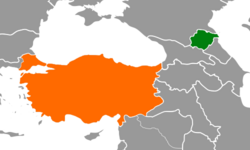User:Al-Khataei/sandbox14
 | |
Waynakhia |
Anatolian Republic |
|---|---|
| Diplomatic mission | |
| Embassy of Waynakhia, Istanbul | Embassy of Anatolian Republic, Sölƶa-Ġala |
| Caucasus Railway | ||||||||||||||||||||||||||||||||||||||||||||||||||||||||||||||||||||||||||||||||||||||||||||||||||||||||||||||||||||
|---|---|---|---|---|---|---|---|---|---|---|---|---|---|---|---|---|---|---|---|---|---|---|---|---|---|---|---|---|---|---|---|---|---|---|---|---|---|---|---|---|---|---|---|---|---|---|---|---|---|---|---|---|---|---|---|---|---|---|---|---|---|---|---|---|---|---|---|---|---|---|---|---|---|---|---|---|---|---|---|---|---|---|---|---|---|---|---|---|---|---|---|---|---|---|---|---|---|---|---|---|---|---|---|---|---|---|---|---|---|---|---|---|---|---|---|---|
|
File:Image name.extension Caption describing the image | ||||||||||||||||||||||||||||||||||||||||||||||||||||||||||||||||||||||||||||||||||||||||||||||||||||||||||||||||||||
| Overview | ||||||||||||||||||||||||||||||||||||||||||||||||||||||||||||||||||||||||||||||||||||||||||||||||||||||||||||||||||||
| Status | Operational | |||||||||||||||||||||||||||||||||||||||||||||||||||||||||||||||||||||||||||||||||||||||||||||||||||||||||||||||||||
| Owner | Caucasus Railway Authority | |||||||||||||||||||||||||||||||||||||||||||||||||||||||||||||||||||||||||||||||||||||||||||||||||||||||||||||||||||
| Locale |
Waynakhia Georgia Armenia Anatolian Republic | |||||||||||||||||||||||||||||||||||||||||||||||||||||||||||||||||||||||||||||||||||||||||||||||||||||||||||||||||||
| Termini | ||||||||||||||||||||||||||||||||||||||||||||||||||||||||||||||||||||||||||||||||||||||||||||||||||||||||||||||||||||
| Stations | 12 | |||||||||||||||||||||||||||||||||||||||||||||||||||||||||||||||||||||||||||||||||||||||||||||||||||||||||||||||||||
| Service | ||||||||||||||||||||||||||||||||||||||||||||||||||||||||||||||||||||||||||||||||||||||||||||||||||||||||||||||||||||
| Type |
Commuter Goods | |||||||||||||||||||||||||||||||||||||||||||||||||||||||||||||||||||||||||||||||||||||||||||||||||||||||||||||||||||
| Services | 4 (2 main, 2 side) | |||||||||||||||||||||||||||||||||||||||||||||||||||||||||||||||||||||||||||||||||||||||||||||||||||||||||||||||||||
| Operator(s) | Caucasus Railway Authority | |||||||||||||||||||||||||||||||||||||||||||||||||||||||||||||||||||||||||||||||||||||||||||||||||||||||||||||||||||
| History | ||||||||||||||||||||||||||||||||||||||||||||||||||||||||||||||||||||||||||||||||||||||||||||||||||||||||||||||||||||
| Commenced | 1989 | |||||||||||||||||||||||||||||||||||||||||||||||||||||||||||||||||||||||||||||||||||||||||||||||||||||||||||||||||||
| Completed | 2004 | |||||||||||||||||||||||||||||||||||||||||||||||||||||||||||||||||||||||||||||||||||||||||||||||||||||||||||||||||||
| Technical | ||||||||||||||||||||||||||||||||||||||||||||||||||||||||||||||||||||||||||||||||||||||||||||||||||||||||||||||||||||
| Line length | ||||||||||||||||||||||||||||||||||||||||||||||||||||||||||||||||||||||||||||||||||||||||||||||||||||||||||||||||||||
| Track length | 1,123.8 km | |||||||||||||||||||||||||||||||||||||||||||||||||||||||||||||||||||||||||||||||||||||||||||||||||||||||||||||||||||
| Minimum radius | ||||||||||||||||||||||||||||||||||||||||||||||||||||||||||||||||||||||||||||||||||||||||||||||||||||||||||||||||||||
| Operating speed | ||||||||||||||||||||||||||||||||||||||||||||||||||||||||||||||||||||||||||||||||||||||||||||||||||||||||||||||||||||
| Highest elevation | ||||||||||||||||||||||||||||||||||||||||||||||||||||||||||||||||||||||||||||||||||||||||||||||||||||||||||||||||||||
| Route layout | ||||||||||||||||||||||||||||||||||||||||||||||||||||||||||||||||||||||||||||||||||||||||||||||||||||||||||||||||||||
| ||||||||||||||||||||||||||||||||||||||||||||||||||||||||||||||||||||||||||||||||||||||||||||||||||||||||||||||||||||
Yildirim Yavuz Selim Cem Hamza Esad Mansur
-- Rajabids and -- Serhad-ı Serbest (The Free Frontier or Open Border) refers to the Anatolian-Georgian border, which is unusually not guarded and is an open border, which is usually commutable by Anatolians and Georgians.
In 1936, Eyyübzade decided to establish ties with Caucasian countries. Since Ardahan and Artvin were ceded to Russian Empire earlier, ties to the new Republic of Georgia began resentfully. However, making note of the large Laz population in Western Lazistan (called Western Lazona by the Georgians), Eyüpoğlu decided to initiate an all-out alliance with Georgia, as it would aid the Black Sea trade network of the Anatolians.
As Azerbaijan had already showed its disrevalence for any mutual alliance, Anatolia sought alliance with Georgia and Armenia. The former president Süleyman Shefik had already initiated the process of alliance with Armenians.
The city of Arkabi in Klarjeti province (Turkish: Arhavi, Artvin) in Georgia is linked with the new city of Şefikiye (formerly, Fındıklı; Georgian: ვიწე Vits'e) in Anatolia.
The mutual border hosts a resthouse, displaying artifacts of cultural and heritage value, including Eyyübzade's coat and original copy of President Khimshiashvilli's autobiography; and a school for young children and offers both Turkish and Georgian curiculum.
Every year on the respective national days, Marches followed by grand salute is presented by both sides. Usually, Georgian side present themselves in Chokha, while the Anatolian side spot fezzes, along with traditional clothes. -- Iskenderiye-i Kuçuk Adnanıye Vasıbıye --
The diplomatic relations between the Republic of Anatolia and Thrace, Azerbaijan were marred by a series of contentious exchanges and discord, primarily triggered by a letter exchange between Süleyman Shefik Erzurumlu, the first President of the Republic of Anatolia and Thrace, and Foreign Minister of Azerbaijan, Hümayun Abülfəzləyev.
In 1934, Süleyman Shefik Erzurumlu penned a letter to Foreign Minister Hümayun Abülfəzləyev, seeking an alliance and the establishment of diplomatic relations between their respective nations. However, the response from Abülfəzləyev, characterized by his devout Shiite beliefs, was inflammatory. Abülfəzləyev controversially referred to the Republic of Anatolia and Thrace as being neither Muslim nor Turk, sparking immediate tension between the two nations.
In a retaliatory move, Süleyman Shefik Erzurumlu responded by addressing Abülfəzləyev and, by extension, Azerbaijan, using the derogatory term "Farsçık" or "Little Persia," insinuating that Azerbaijan was merely an extension of Persia, implying cultural or political subservience.
This exchange of derogatory remarks escalated the conflict, causing a significant rift between Anatolia and Azerbaijan. Subsequently, the Republic of Anatolia distanced itself from Azerbaijan and moved closer to Armenia, even acknowledging their claims on Azeri lands, further exacerbating the strained relations between the nations. -- Perso-arabic script: اصالتلو رتبتلو مودتلو دوست ولاشعارمز جنابلارى؛
دولتمزله ازربیجان حكمتى بيننده دركار اولان روابط دوستى و مخادمتڭ استكمال اسباب تأكد و تقررؤ ملتزممز اولوب؛ Latin script: Asāletlü rütbetlü meveddetlü dost-ı vilā-şi‘ārımız cenābları; Devletimizle Azerbaycan Hükūmāti beyninde der-kenār olan revābıt-ı dostī ve muhādenetin istikmāl-i esbāb-ı te’ekküd ve takarrürü mültezimimiz olub; -- Kafkasya Demiryolu or Caucasus Railways is the longest mountainous railway in the world, stretching from xyz in North Waynakhia and terminates finally in Erzincan in Anatolia. It spreads across Caucasus having several stations in Awaristan, Georgia, Armenia.
It indirectly is connected to Balkan Railways, by the Erzincan-Engürü-Konya-Kale-i-Sultani-Istanbul-Edirne-Xanthi-Sofia (Cumhuriyet Demiryolu or Republic Railways). -- Landonism (Landonculuk) Derzhavism (Derzavcılık) Monarchism (Kralcılık) Tribalism (Kabilecilik) Democratism (Halkcılık) Triarchy (Üççuluk) Condominium (Şirketcilik) -- Hodza Tsoban Daije Haznadar -- Byzo Ezben Gaidr Pytr Rhask Rhaskutorme Rhes Satr Saut Skar Skil Sura Taruthin Zil Asa (stone) Bebr (beaver) Brent (deer) Bur (man) Dars (brave) Mer (large) Per (rock) Rud (red) Sur (hero) Taru (spear) Zuml (dragon) -- Istanbul'da Siyar Camiyesi (Sierran University of Istanbul) -- Dars Burpor Taru Zumlpor Spardak Surzelm Ter Gaidrpor Ezben Merperpor Taruthin Dunsind Zuml Terpor Kerzelm -- Adana Dârüleytâm-ı Osmani